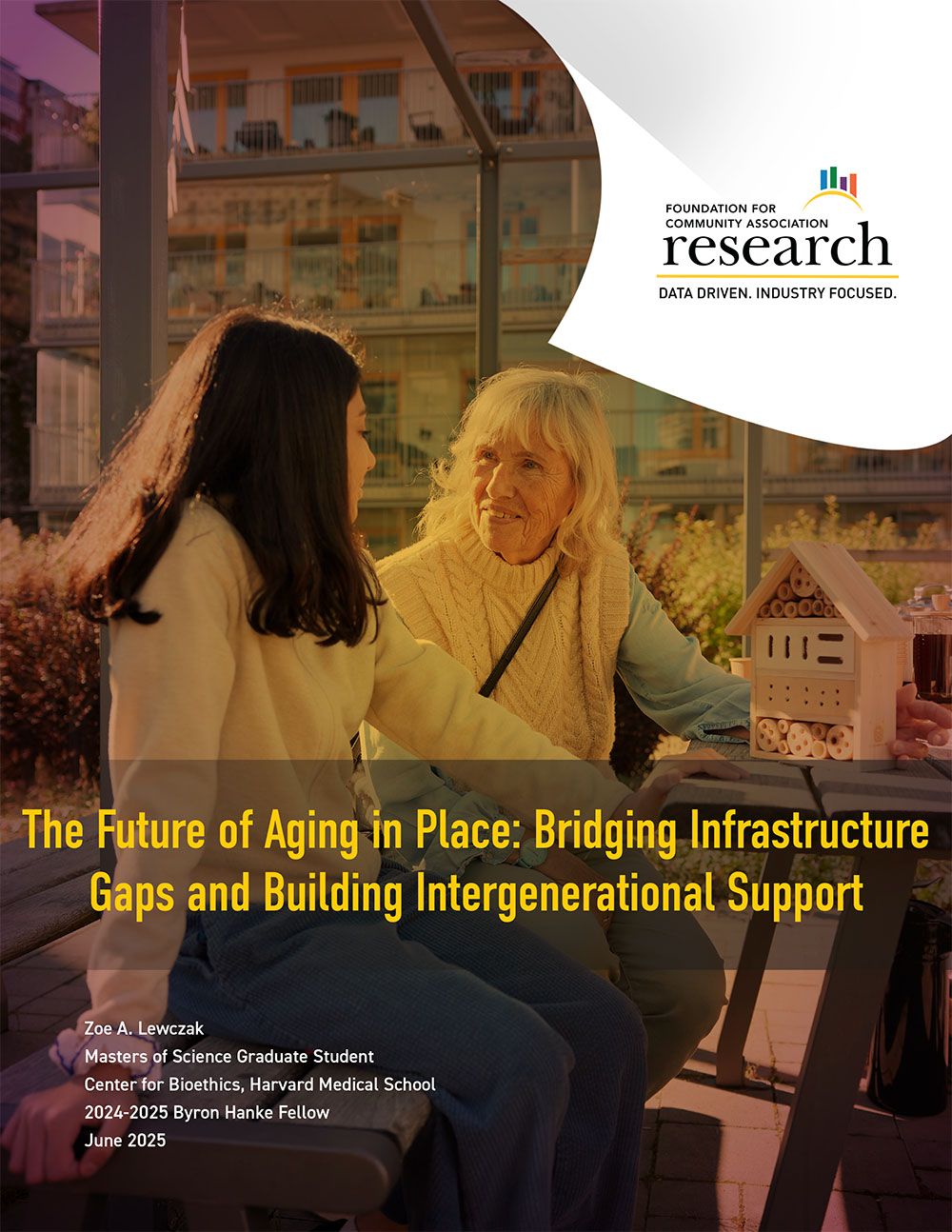 Wellesley, MA As New England’s population continues to age, community associations – condominiums, homeowners associations, and cooperatives – are finding themselves on the frontlines of one of the region’s most pressing housing challenges: how to help older residents successfully age in place.
Wellesley, MA As New England’s population continues to age, community associations – condominiums, homeowners associations, and cooperatives – are finding themselves on the frontlines of one of the region’s most pressing housing challenges: how to help older residents successfully age in place.
The latest report available through the Foundation for Community Association Research, authored by Zoe Lewczak as part of her Byron Hanke Fellowship, examines how community associations can improve infrastructure to promote senior resident well-being. Lewczak’s research is designed to enhance the quality of life for older adults living in association-managed communities. Drawing on insights from both residents and managers, the study highlights urgent service gaps but also identifies real opportunities to support healthier, more connected aging.
Rising Risks of Isolation
The report underscores the health impacts of loneliness and social isolation, which are especially acute among older adults. Studies consistently link these conditions to higher risks of heart disease, depression, and cognitive decline. While 86% of residents surveyed believe that neighborly connections can reduce isolation, more than 80% want greater opportunities for engagement. Despite this, over 90% of associations currently lack any formal caregiving or support resources.
Aging Infrastructure Meets Limited Budgets
Beyond social concerns, physical infrastructure poses another significant challenge. Many older associations struggle with outdated building designs that limit accessibility – such as a lack of ramps, elevators, or properly maintained communal spaces. Deferred maintenance, coupled with residents’ resistance to higher assessments, has left some boards facing difficult financial choices.
“The research points to decades of underfunded reserves in many associations,” Lewczak said. “Without planning, essential systems like elevators and roofs may fail just as communities need them most.”
Why It Matters
The implications extend beyond individual residents. Healthy, engaged seniors contribute to stronger property values and more stable communities. Conversely, inadequate planning and poor infrastructure management can drive up long-term costs, reduce housing desirability, and increase pressure on local healthcare and municipal services.
Opportunities for Action
While the challenges are significant, the study outlines practical steps that associations can take. These include conducting regular needs assessments, prioritizing critical infrastructure repairs, and forging partnerships with local caregiving providers to bridge service gaps. Expanding social opportunities through clubs and communal programming remains important, while gradual adoption of digital tools – with appropriate training and safeguards – could help reduce isolation.
The report also emphasizes the value of professional management. Experienced managers can guide boards in budgeting, reserve planning, and navigating liability concerns, ensuring that associations are positioned to adapt as resident needs evolve.
Looking Forward
By 2040, community association living is expected to be the dominant housing model in the United States. For New England communities, this represents both a challenge and an opportunity. If associations can address aging infrastructure, foster social connection, and prepare for increased caregiving needs, they have the potential to become models of healthy, supportive, and resilient living environments.
The full report, The Future of Aging in Place: How Community Associations Can Bridge Infrastructure Gaps and Foster Intergenerational Support for Senior Well-Being, is available as a free download from the Foundation for Community Association Research at:
https://foundation.caionline.org/wp-content/uploads/2025/07/Hanke25FinalReport.pdf.
By the Numbers: Key Findings from the Report
• 64% of residents intend to age in place within their community.
• 86% believe neighborly interactions reduce loneliness and isolation.
• 80% say they want more opportunities for community engagement.
• 85% anticipate needing professional caregiving support in the future.
• 90%+ of associations currently provide no caregiving-related resources.
 (1).png)







